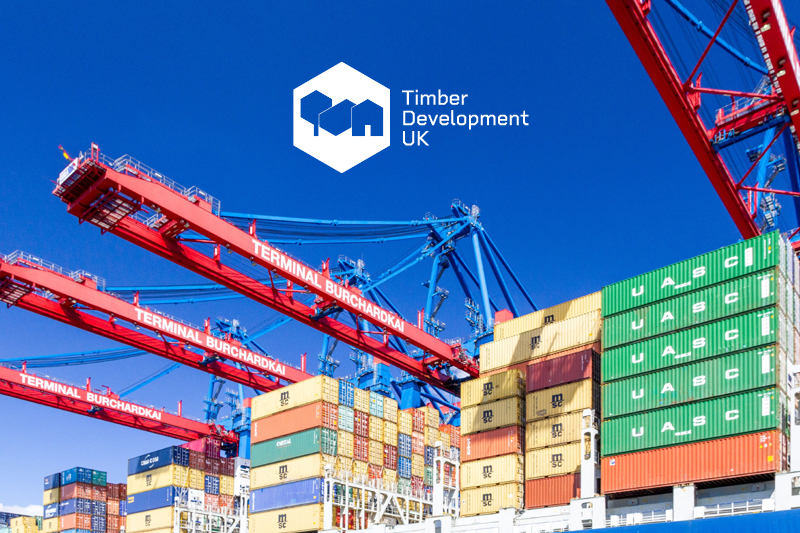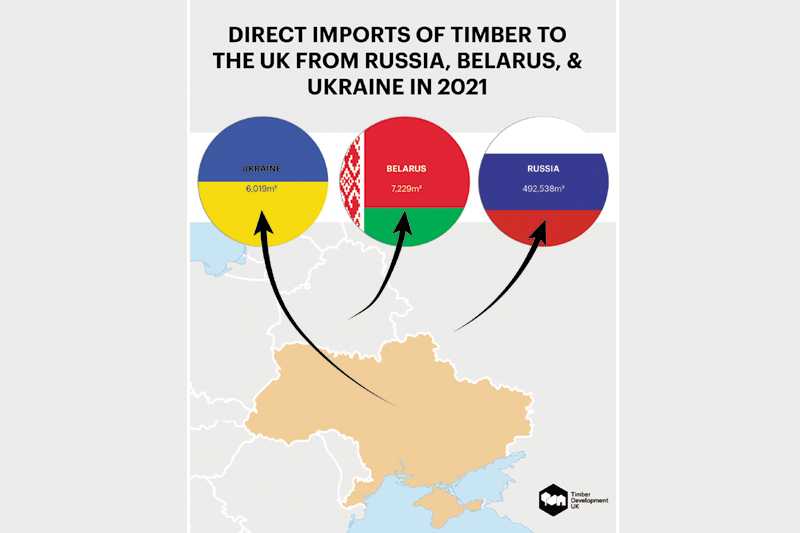
In an article originally appearing in PBM’s June edition, David Hopkins, CEO of Timber Development UK, provides an insight into current the state of the timber industry and what may lie ahead for the second half of the year.
The end of 2021 saw merchant shelves fully stocked with timber once again after the supply challenges we experienced last summer. And yet, despite everyone breathing a sigh of relief at the beginning of 2022, many of the possible barriers to trade and supply continued to have an impact even before the war in Ukraine began.
Rising global fuel costs are having a significant impact on manufacturing and prices, with many of these costs inevitably being passed down the supply chain to merchants and tradespeople. We’re also still experiencing the impact of a widespread shortage of HGV drivers, and despite government attempts to fast-track new drivers coming into the industry, we would expect this to continue at least until the end of 2022.
Have prices peaked?
Timber prices remained high in early 2022 after significant increases during 2021. For example, the average price of sawn and planed softwoods in May, June and July last year rose by 55%, 65% and 88% respectively compared with 2020 levels — and there has been little fall away from these peaks so far in 2022, despite stocks on the ground mostly returning to pre-pandemic levels.
Timber is globally traded and the UK is, effectively, competing with other markets including the EU and the US for timber imports. Increased demand from one country or region will inevitably impact on the supplies available to another, and prices are always affected by that balance between supply and demand.
The US repair, maintenance and improvement (RMI) and private housing markets are booming and this is likely to mean greater competition for wood supplies this year — inevitably either driving prices higher or, at the very least, keeping them at current levels.
It is also possible that current consumer concerns in the UK around the rising cost of living and falling consumer confidence may cause demand for private RMI work to fall slightly as people choose not to spend money unless absolutely necessary. Whether this may help to offset or at least slow down any price rises only time will tell.
The impact of Russian sanctions

The war in Ukraine and subsequent sanctions are already affecting the timber supply chain, and we believe this will continue for some time to come. Many global businesses have ceased trade with Russia and Belarus, and UK and EU sanctions have banned the imports of timber from either country — a move that PEFC, FSC and Timber Development UK all strongly support.
Ultimately, any timber exported from Russia or Belarus since 8 April is now considered ‘conflict timber’ and cannot be used.
Although the UK imports little timber directly from Russia, the removal of this timber from the global supply chain will inevitably have an impact on supplies of a number of timber products. We anticipate pressures around Birch Plywood and Oak in particular, as well as Russian Siberian Larch.
In some cases, especially for Russian joinery redwood, whitewood and birch plywood, these products aren’t directly imported into the UK in large volumes. However, they are exported from Russia into the EU, where they are processed and repackaged into Planed All Round Timber and mouldings before onwards delivery — and so may not be immediately obvious as having come from Russian source material.
At Timber Development UK we are working with our members and EU supply partners to identify alternative sources for these timber products wherever possible. There are alternative supply chains for Birch Plywood in Finland, Estonia, Latvia and Poland, though it is unlikely there will be enough spare capacity from those manufacturers to fully make up for the lost Russian supply.
Possible alternatives to Birch Plywood (though these may not match all the properties of that timber) include:
- High-quality European Poplar Plywood
- Indonesian and Malaysian Tropical Hardwood Plywood
- Canadian Douglas Fir Plywood Poplar
- Okume (Gaboon) Plywood.
Merchants looking for new sources of timber should contact Timber Development UK suppliers for help and advice. We will continue to provide regular updates on product supply and demand issues across the timber supply chain on our website timberdevelopment.uk.
Timber Development UK is a new representative body formed by the merger of the Timber Trade Federation (TTF) and the Timber Research and Development Association (TRADA).
A slower housing and RMI market in Q1 2022 is being reflected in timber import volumes, which fell below the record levels seen in 2021, according to the latest Timber Development UK statistics.
The statistics show that while timber import volumes are nearly 20% lower in February 2022 than those of February 2021, they remain slightly above the pre-pandemic levels of February 2020. While this was the fifth consecutive month where total timber import volumes were below the previous year, it marks a return to more expected patterns within the market.
The biggest factor driving change between February 2022 and February 2021 was a 178,000m3 decline in softwood imports, with hardwood and plywood imports up by 32% and 8% respectively.
Nick Boulton, Timber Development UK Head of Technical and Trade, said: “After the 12% construction growth and a record year for timber imports in 2021, we were always expecting more modest import volumes in the early months of 2022. Softwood imports correlate heavily with the RMI and new housing market which has had a slow start to the year. It is likely these markets will continue to slow as we head into Spring 2022, with the latest CPA forecast suggesting that inflation will impact these construction sectors the hardest.”









